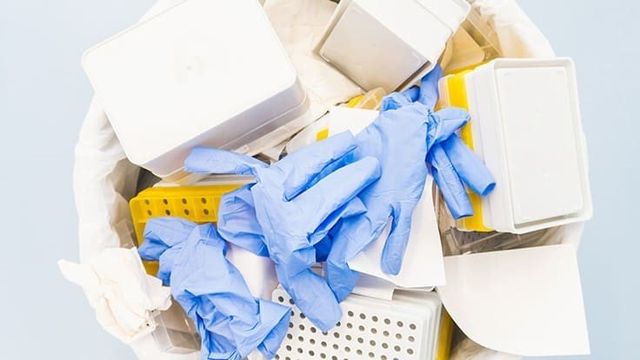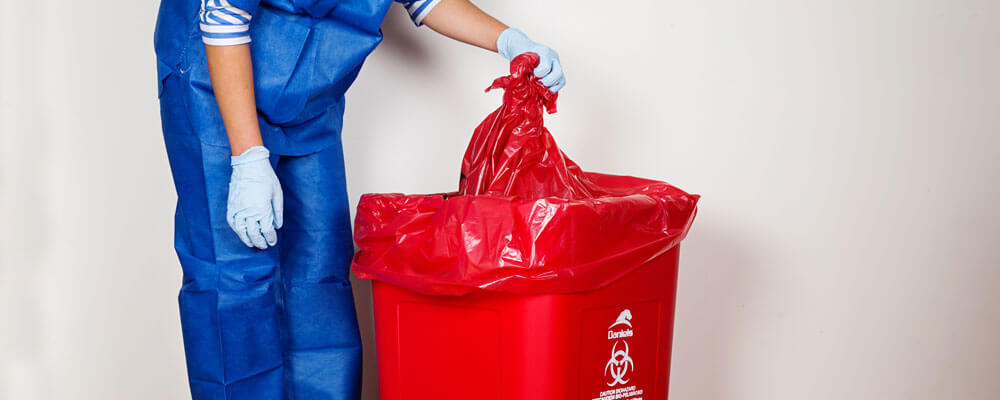Safeguarding Health: Introducing the Significance of Specialist Medical Waste Removal
Safeguarding Health: Introducing the Significance of Specialist Medical Waste Removal
Blog Article
Minimize Prices and Optimize Safety And Security: Effective Medical Garbage Disposal Methods
Reliable clinical waste disposal techniques are important for health care facilities to reduce costs and make the most of safety and security. With the expanding worry for environmental sustainability and the increasing variety of laws bordering waste management, it is important for healthcare companies to embrace certified and efficient techniques. By carrying out appropriate segregation and categorization, efficient product packaging and labeling, secure transport and handling, effective treatment and disposal approaches, and compliance with governing standards, medical care facilities can make certain the secure and accountable management of clinical waste. In this discussion, we will certainly explore each of these approaches thoroughly, providing understandings and practical pointers for healthcare specialists to optimize their garbage disposal processes.

Correct Segregation and Categorization
Proper segregation and categorization are vital parts of effective medical waste disposal techniques, making sure the safety and security of medical care employees, the general public, and the setting - medical waste removal. medical waste disposal services with WasteX. By separating various kinds of medical waste at the factor of generation, medical care facilities can minimize the risk of cross-contamination and possible damage to ecological communities and individuals
One of the key variables in appropriate segregation is the recognition and classification of clinical waste. This includes categorizing waste right into different teams, such as infectious, unsafe, radioactive, or pharmaceutical waste. Each group needs specific handling, storage space, and disposal techniques to avoid any kind of unfavorable effects on human health and wellness and the setting.
Moreover, proper segregation additionally includes using color-coded containers and labels to clearly recognize and set apart the various types of clinical waste. This assists health care employees and waste administration personnel to conveniently recognize and deal with the waste properly. Red containers may be utilized for contagious waste, while yellow containers might be assigned for hazardous waste.
In enhancement to partition, correct classification also includes the correct packaging and control of medical waste. This guarantees that waste is securely kept and transferred without presenting any type of dangers to people or the atmosphere. Making use of puncture-resistant and leak-proof containers, in addition to appropriately sealing and labeling them, helps to stop any unintentional exposure or release of dangerous substances.
Efficient Product Packaging and Labeling
Reliable packaging and labeling play an important role in making certain the efficient and secure disposal of clinical waste. Appropriate packaging is necessary to stop leak, breakage, or splilling during transport and handling. It helps to reduce the threat of contamination and protects healthcare workers, waste administration personnel, and the setting from prospective threats.
Clinical waste must be packaged in tough and leak-proof containers that are immune to penetrate and damage. These containers must be correctly secured to avoid any leak. In addition, the product packaging must have the ability to hold up against the conditions of transportation, including temperature level variants and rough handling.
Classifying is similarly important as it supplies crucial info regarding the materials of the waste and any type of possible hazards related to it. The tags must include the name of the medical care center, the kind of waste, and any special delivery directions. Clear and standard labeling ensures that waste monitoring workers can quickly determine and handle the waste suitably.
Effective product packaging and labeling also help in the appropriate segregation and categorization of clinical waste. Clear labeling permits very easy identification of various waste streams, such as infectious waste, sharps, or pharmaceutical waste. This assists in simplifying the disposal process and guaranteeing that the waste is dealt with or dealt with based on governing guidelines.
Safe Transport and Handling
Guaranteeing the safe transport and handling of clinical waste is of utmost relevance in order to prevent any kind of potential health and environmental risks. Clinical waste, such as sharps, infected materials, and pharmaceutical waste, have to be correctly packaged and dealt with to lessen the threat of direct exposure to dangerous compounds and microorganisms.
Moving clinical waste needs conformity with rigorous regulations and standards set by regional authorities and ecological companies. These guidelines intend to safeguard the health and security of workers associated with waste monitoring and stop the launch of harmful products right into the atmosphere.
To make sure risk-free transportation, clinical waste needs to be positioned in puncture-resistant and watertight containers that are properly secured and identified. In addition, it is crucial to utilize specific automobiles geared up with proper safety and security features to move medical waste. medical waste disposal services with WasteX.
Handling medical waste also calls for appropriate training and adherence to safety and security protocols. Employees associated with the handling of clinical investigate this site waste must wear suitable personal protective equipment (PPE) such as dress, handwear covers, and masks to reduce the danger of direct exposure. They need to likewise comply with strict hygiene methods to avoid the spread of infections and guarantee the secure disposal of waste.
Effective Treatment and Disposal Methods
Carrying out ideal therapy and disposal techniques is critical in managing clinical waste efficiently and lessening potential wellness and environmental threats. Clinical waste, that includes sharps, transmittable products, chemicals, and drugs, can present significant threats otherwise managed and taken care of appropriately. There are several therapy and disposal methods readily available that stick to regulatory guidelines and promote risk-free practices.
One common approach is incineration, which involves burning the waste at heats. Incineration is effective in ruining pathogens and reducing the quantity of waste, but it can launch harmful toxins into the air otherwise effectively regulated. It is vital to use modern incinerators outfitted with discharge control innovations.
An additional technique is autoclaving, which utilizes vapor and pressure to disinfect the waste. Autoclaving works in killing microorganisms and minimizing the volume of waste, but it calls for mindful tracking and maintenance to make certain proper functioning. The sanitized waste can then be safely gotten rid of in a landfill.
Chemical therapy is an additional choice, which includes using anti-bacterials or other chemicals to neutralize pathogens. This approach is frequently used for liquid waste, such as laboratory samplings. However, it is essential to utilize suitable chemicals and follow appropriate procedures to make sure efficient treatment and stop ecological contamination.

Conformity With Regulatory Guidelines
Adhering to regulatory guidelines is crucial in guaranteeing proper compliance with medical garbage disposal practices. These standards are put in area to shield public wellness, protect against ecological contamination, and preserve office security. Compliance with regulative guidelines is critical for medical care centers, as non-compliance can result in charges, fines, and reputational damage.
Governing standards lay out the proper handling, storage, transport, and disposal of clinical waste. They supply details instructions on product packaging needs, labeling, and record-keeping. These guidelines likewise resolve the partition of various waste advice streams, such as sharps, transmittable waste, and pharmaceutical waste. Healthcare centers have to make certain that their waste monitoring techniques align with these standards to minimize the threat of direct exposure to dangerous materials and protect against the spread of infections.
To maintain conformity, medical care facilities need to develop detailed waste administration programs that include staff training, regular audits, and ongoing tracking. It is necessary to keep updated with any updates or modifications to regulative standards, as techniques may develop with time. By remaining notified and carrying out proper procedures, medical care centers can decrease the potential for governing violations and secure the wellness and safety and security of their personnel, individuals, and the bordering neighborhood.
Verdict
Finally, executing reliable clinical waste disposal techniques is essential for making best use of and lessening costs safety. Appropriate partition and classification, effective packaging and labeling, secure transportation and handling, and effective treatment and disposal approaches are important steps to make sure compliance with regulatory guidelines. medical waste removal. By adhering to these techniques, medical care centers can safeguard the environment and public wellness while likewise lowering monetary burdens connected with medical waste monitoring
By implementing correct partition and classification, reliable product packaging and labeling, risk-free transport and handling, effective therapy and disposal techniques, and conformity with governing guidelines, medical care facilities can guarantee the responsible and risk-free management check my blog of medical waste. Red containers may be made use of for transmittable waste, while yellow containers might be assigned for harmful waste.
Clear and standard labeling ensures that waste management employees can quickly recognize and deal with the waste properly. (medical waste disposal services with WasteX)
Clear labeling permits for easy recognition of different waste streams, such as infectious waste, sharps, or pharmaceutical waste. These guidelines also address the partition of different waste streams, such as sharps, contagious waste, and pharmaceutical waste.
Report this page